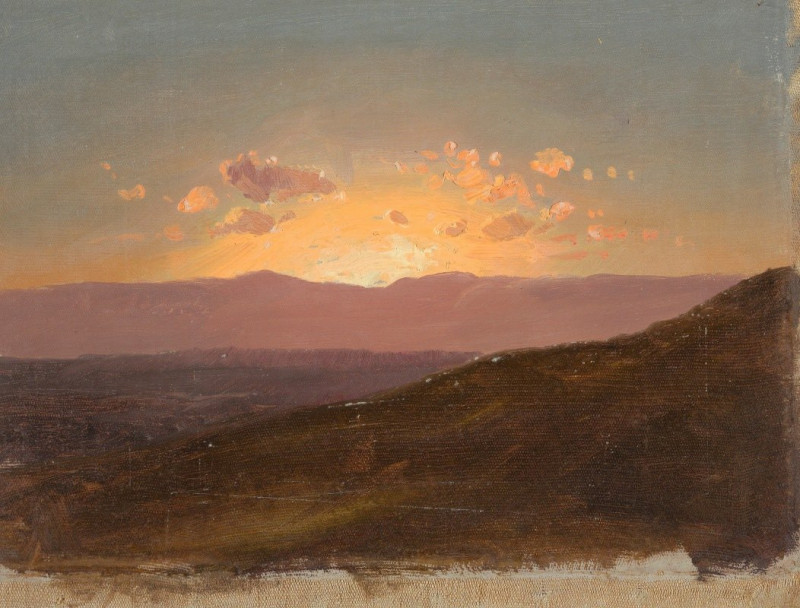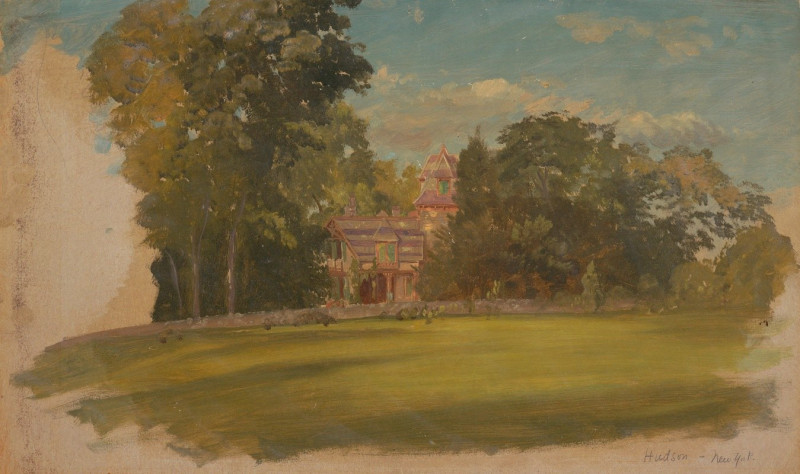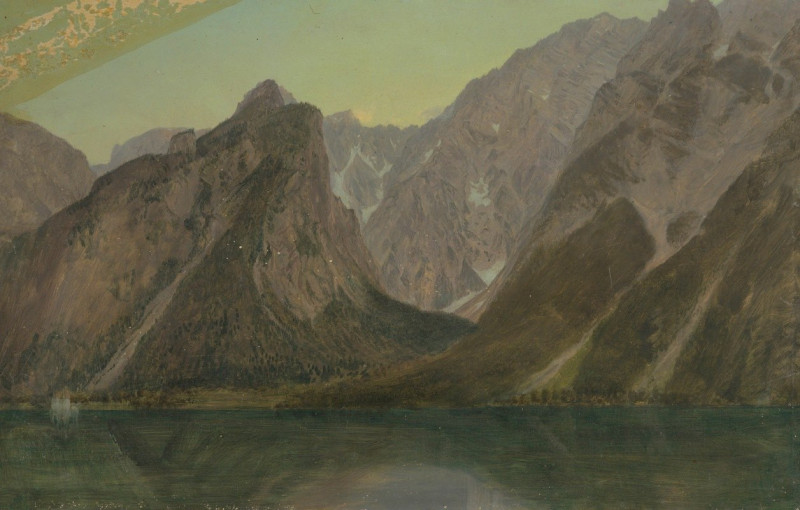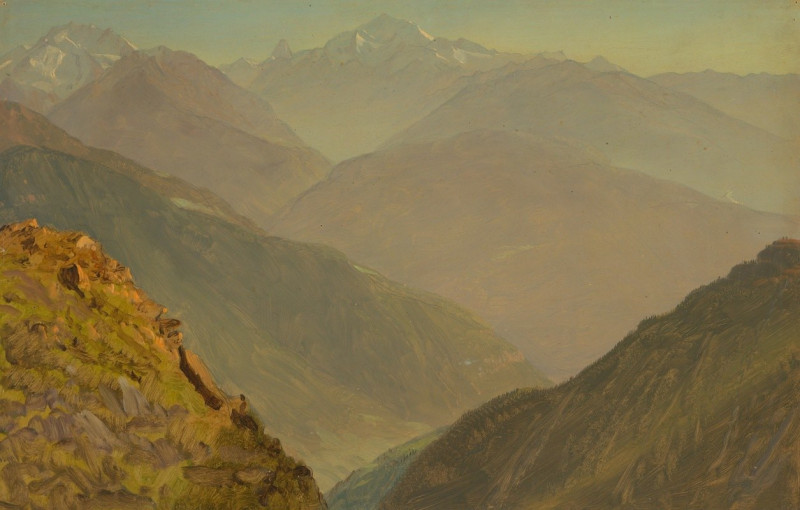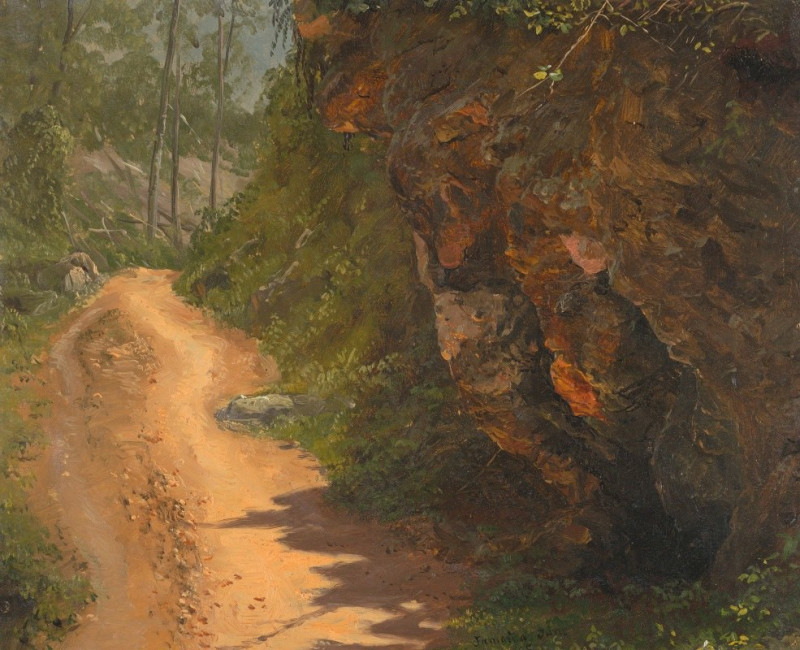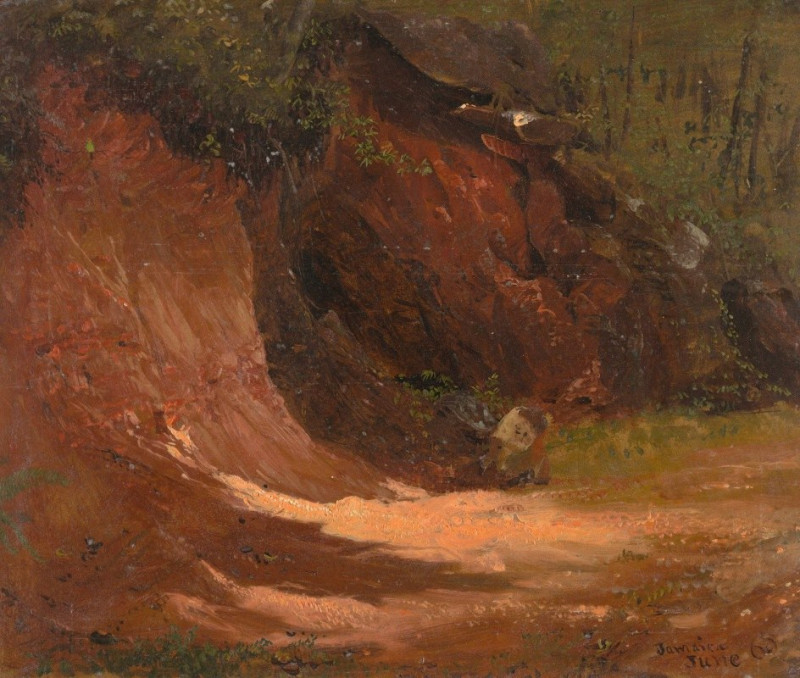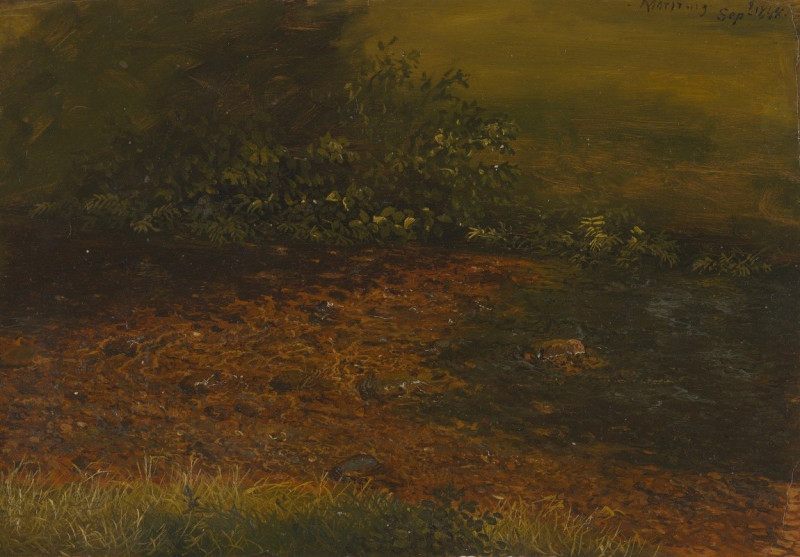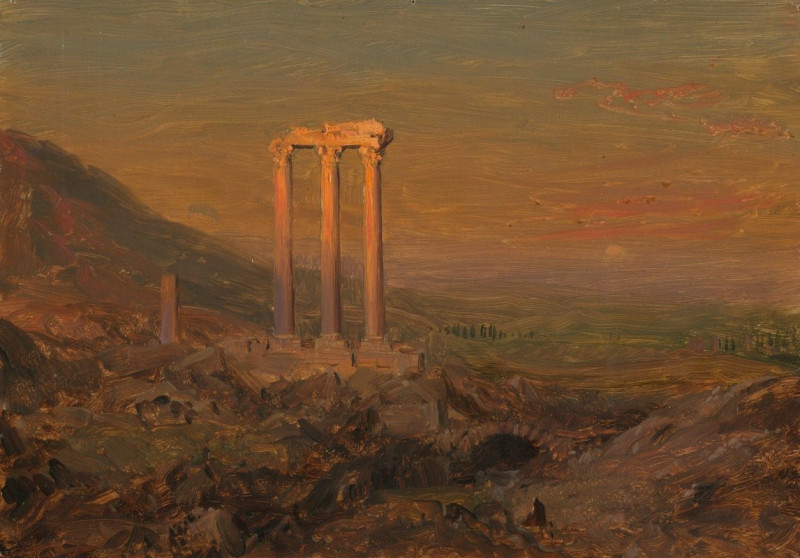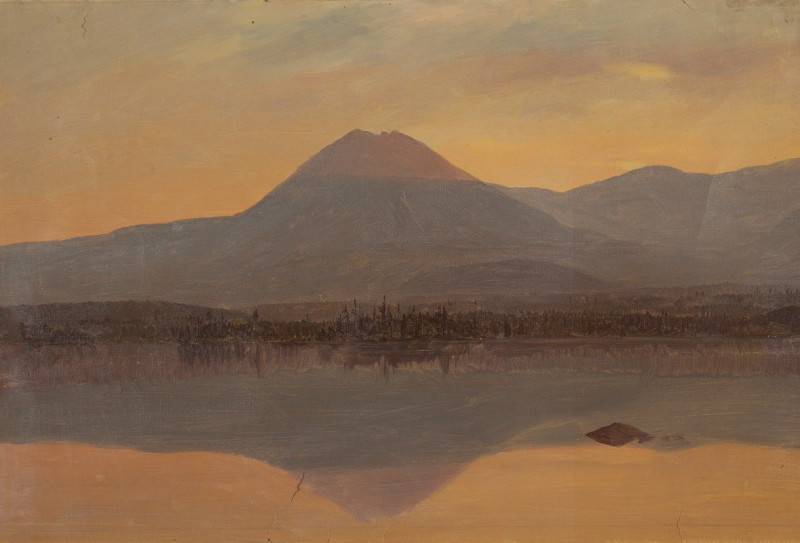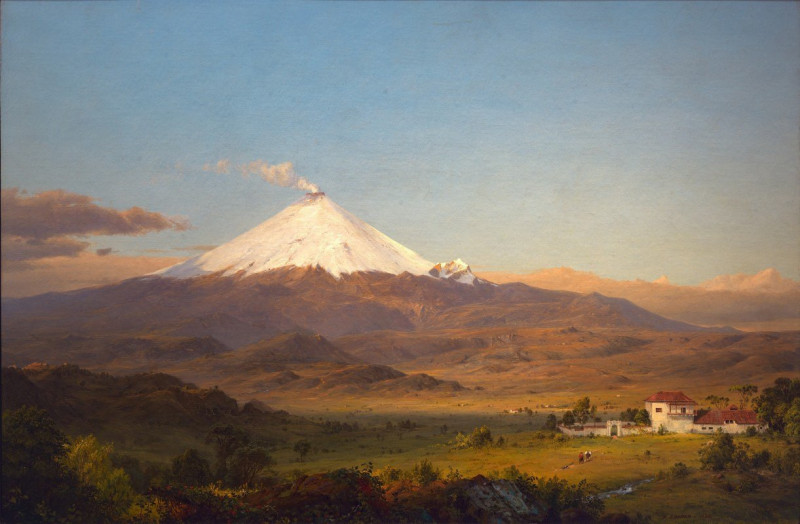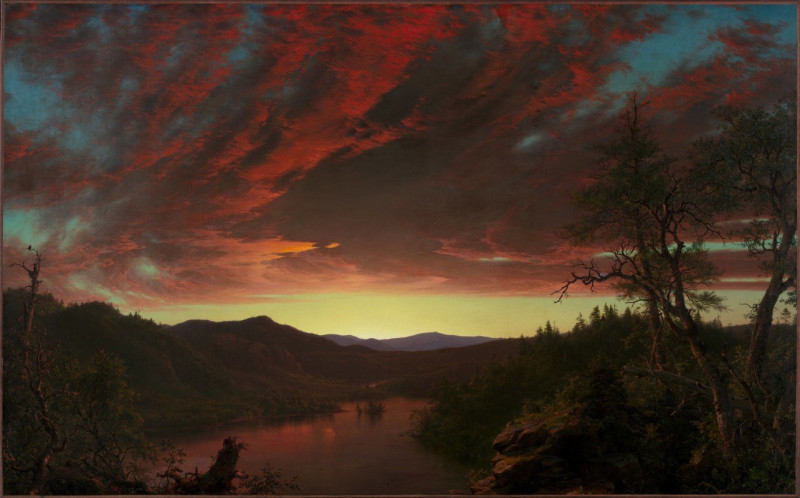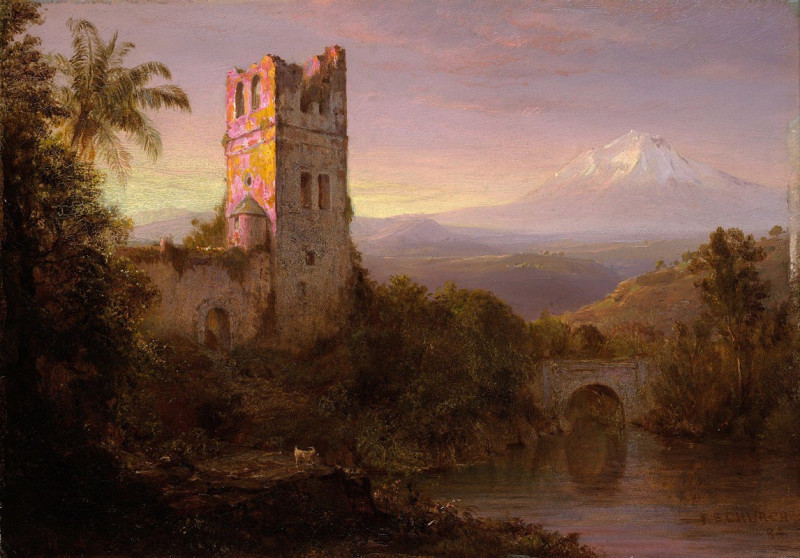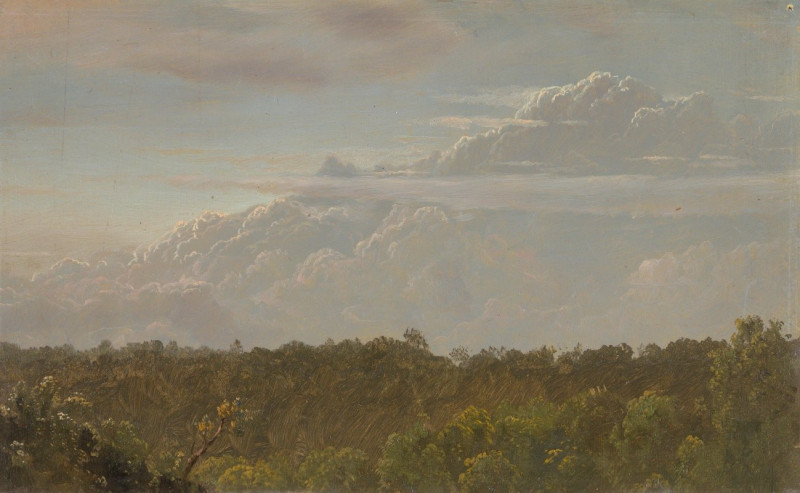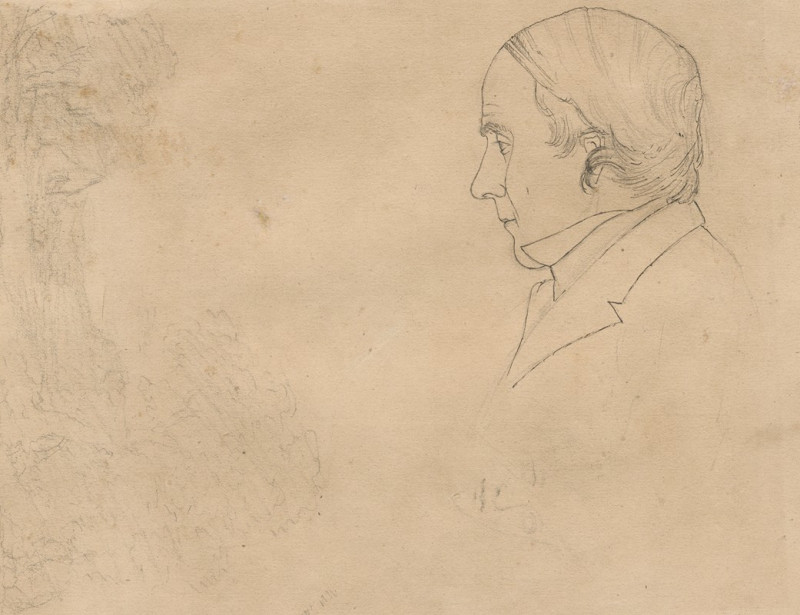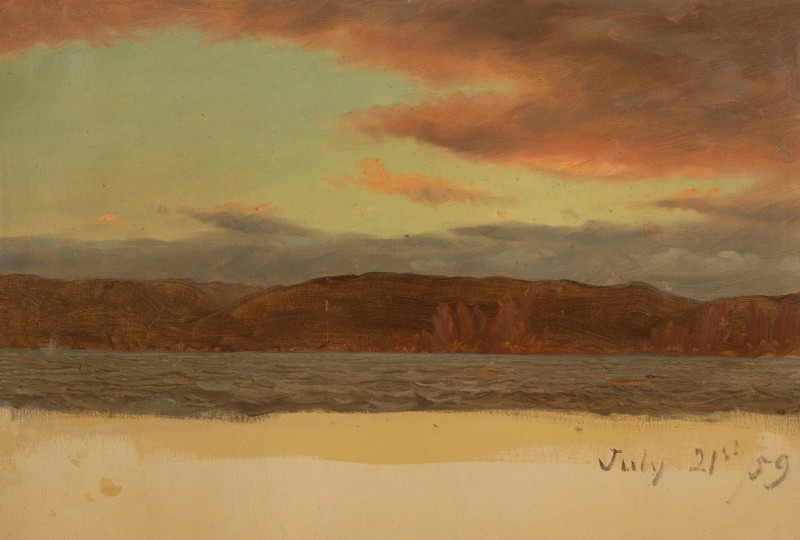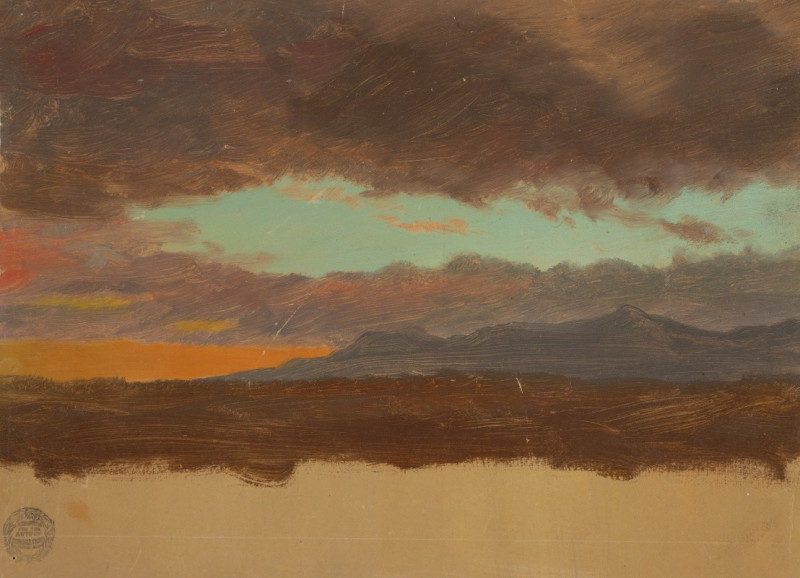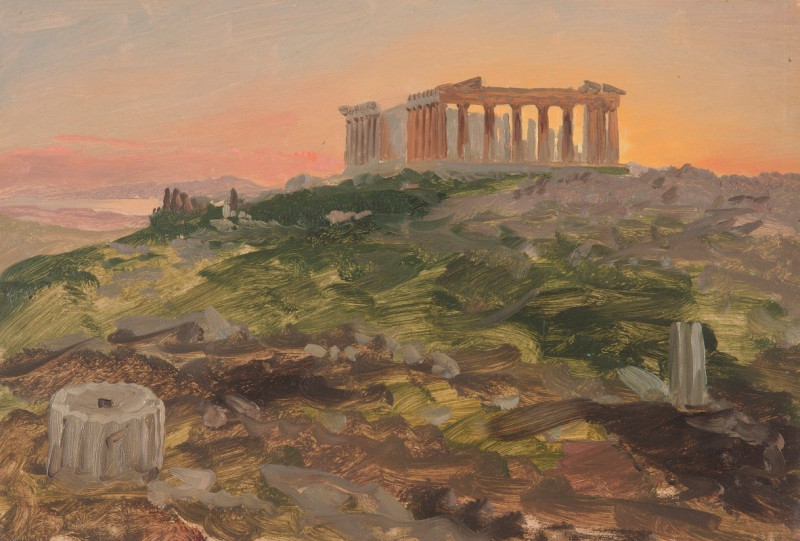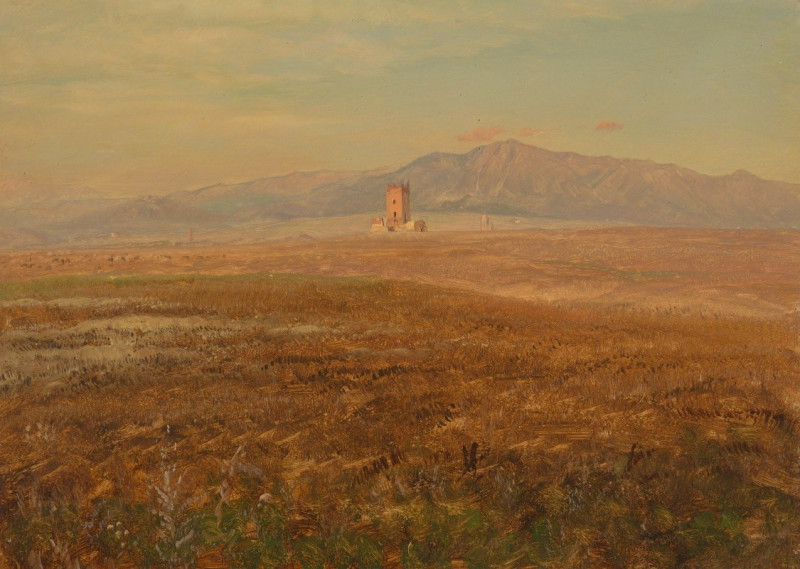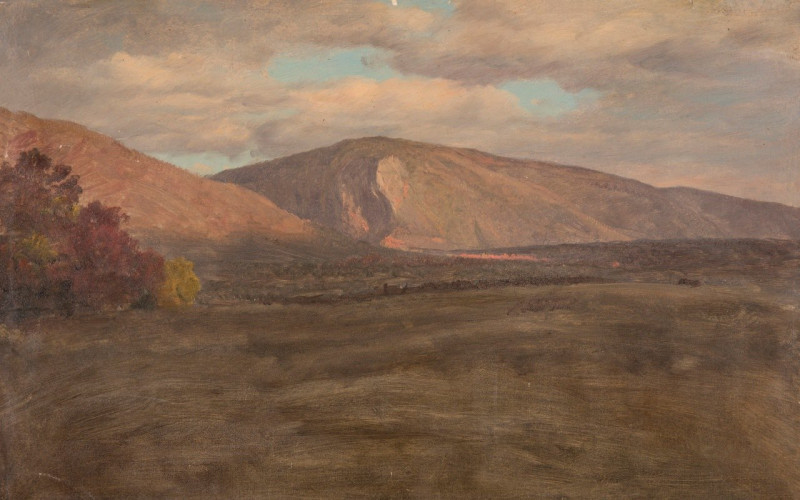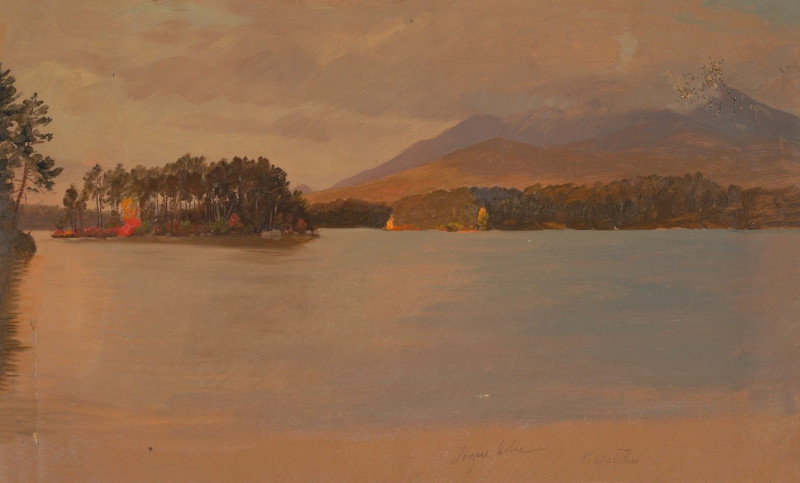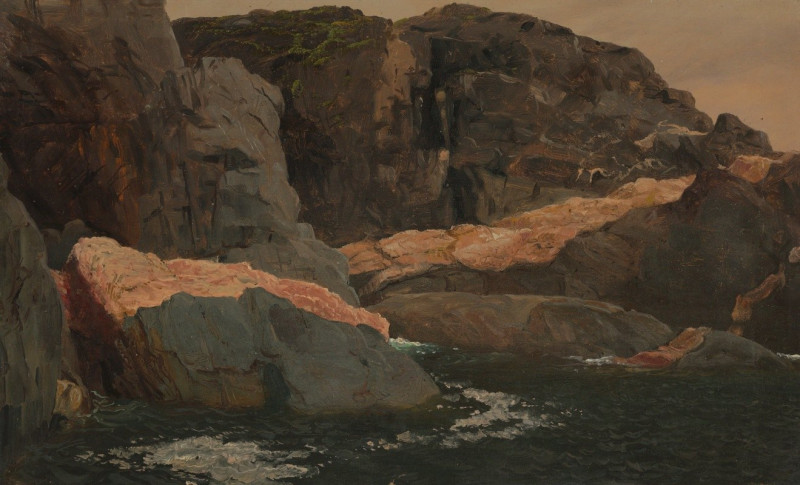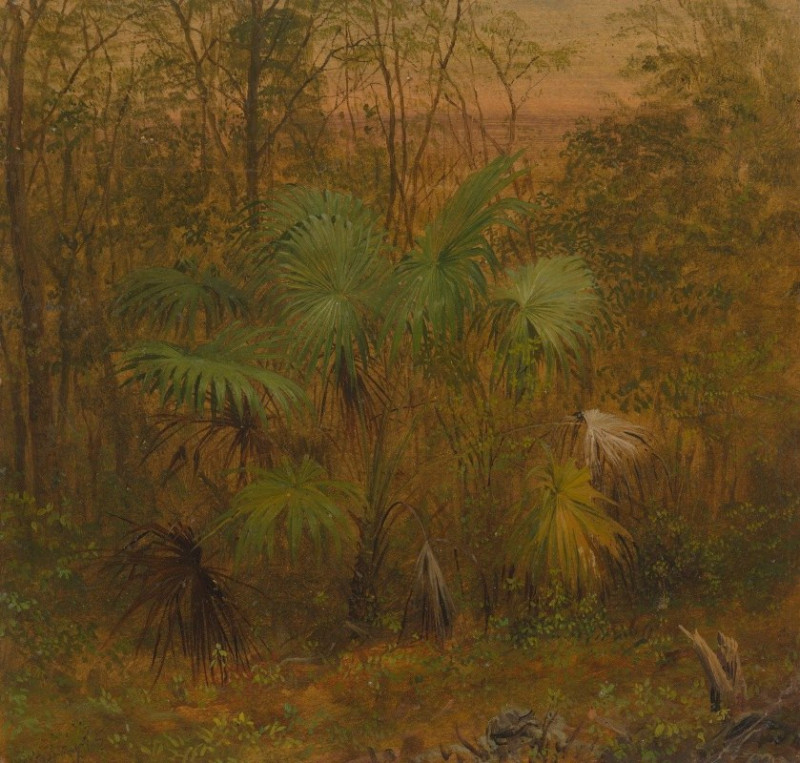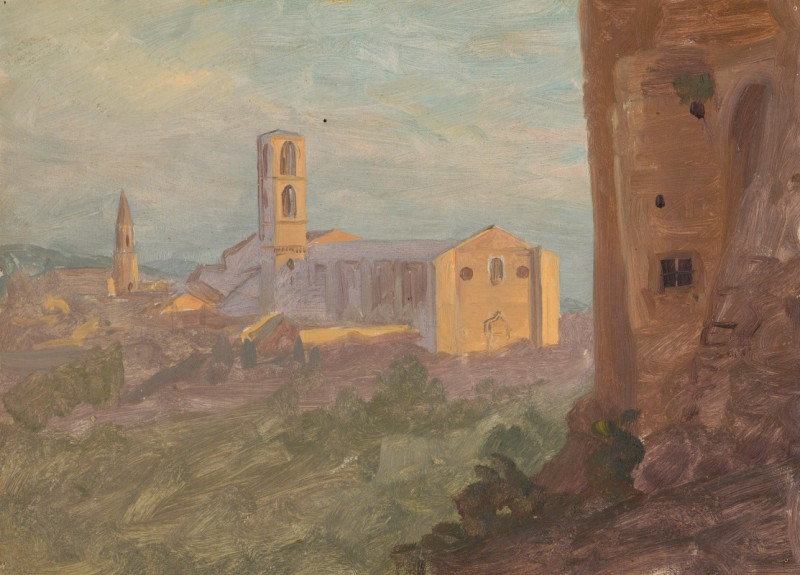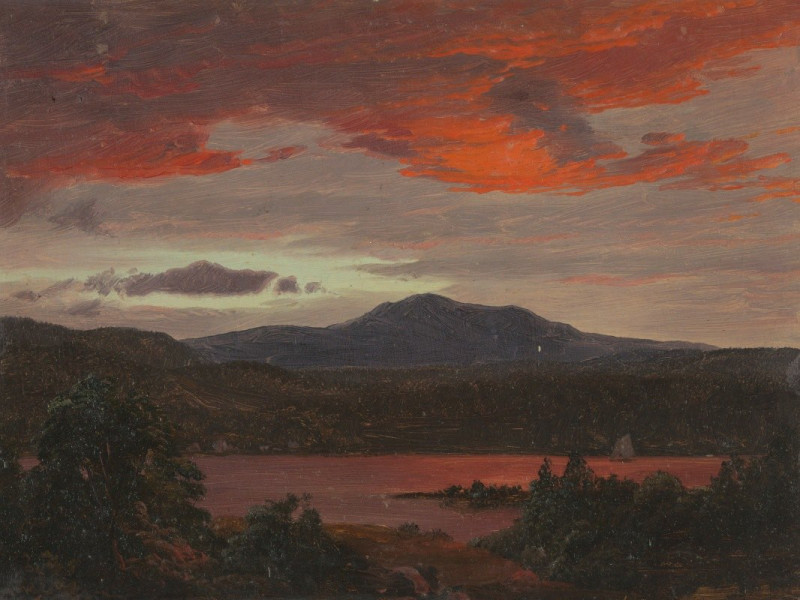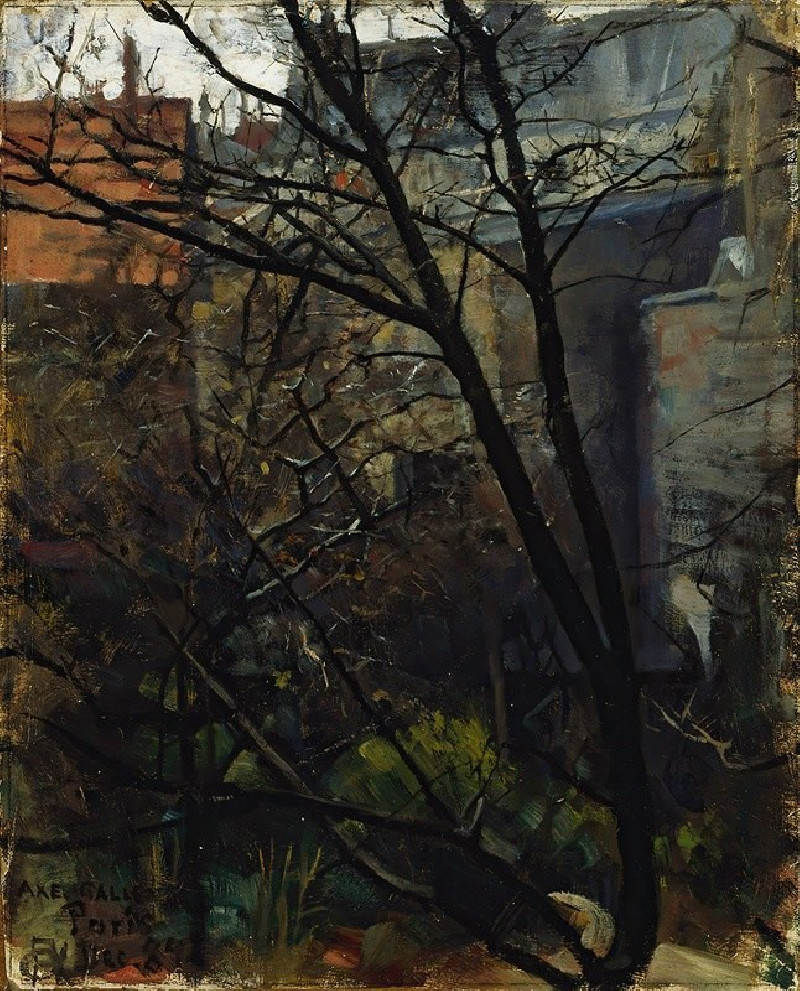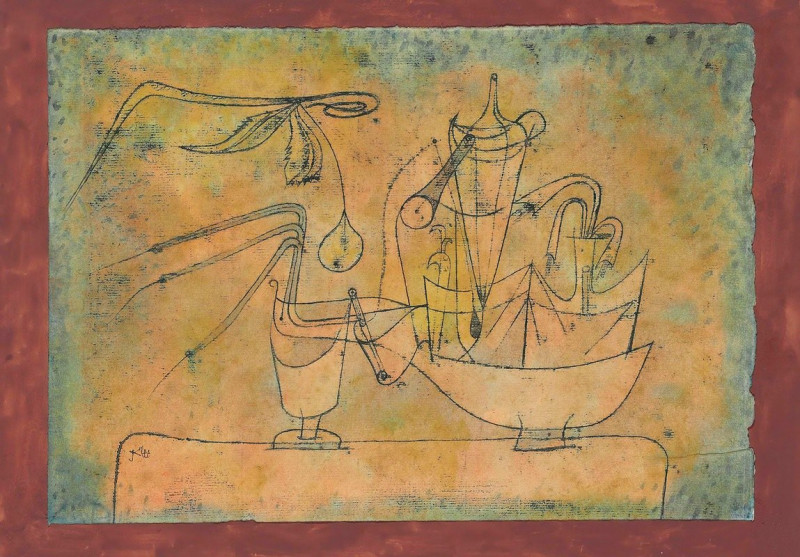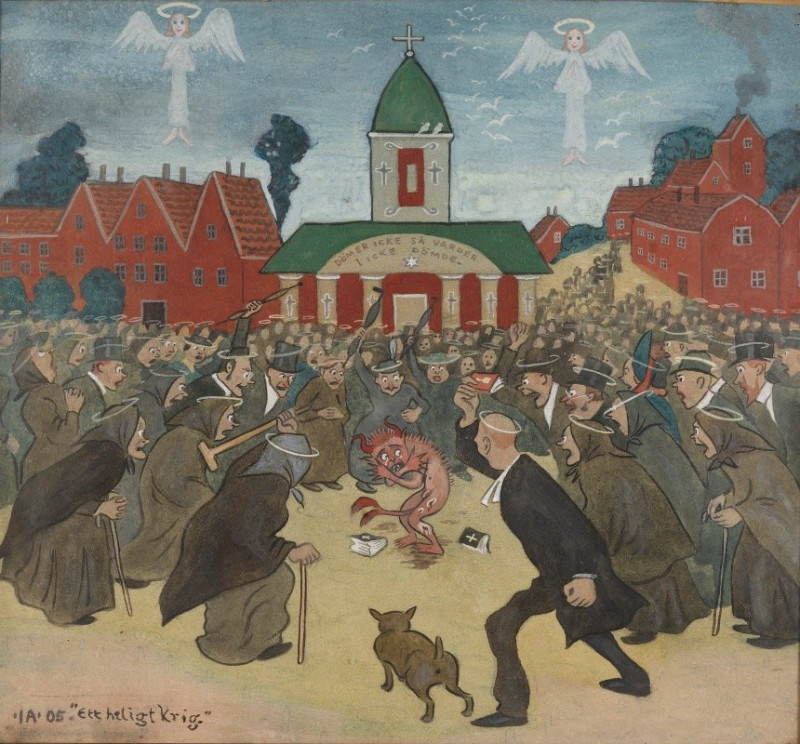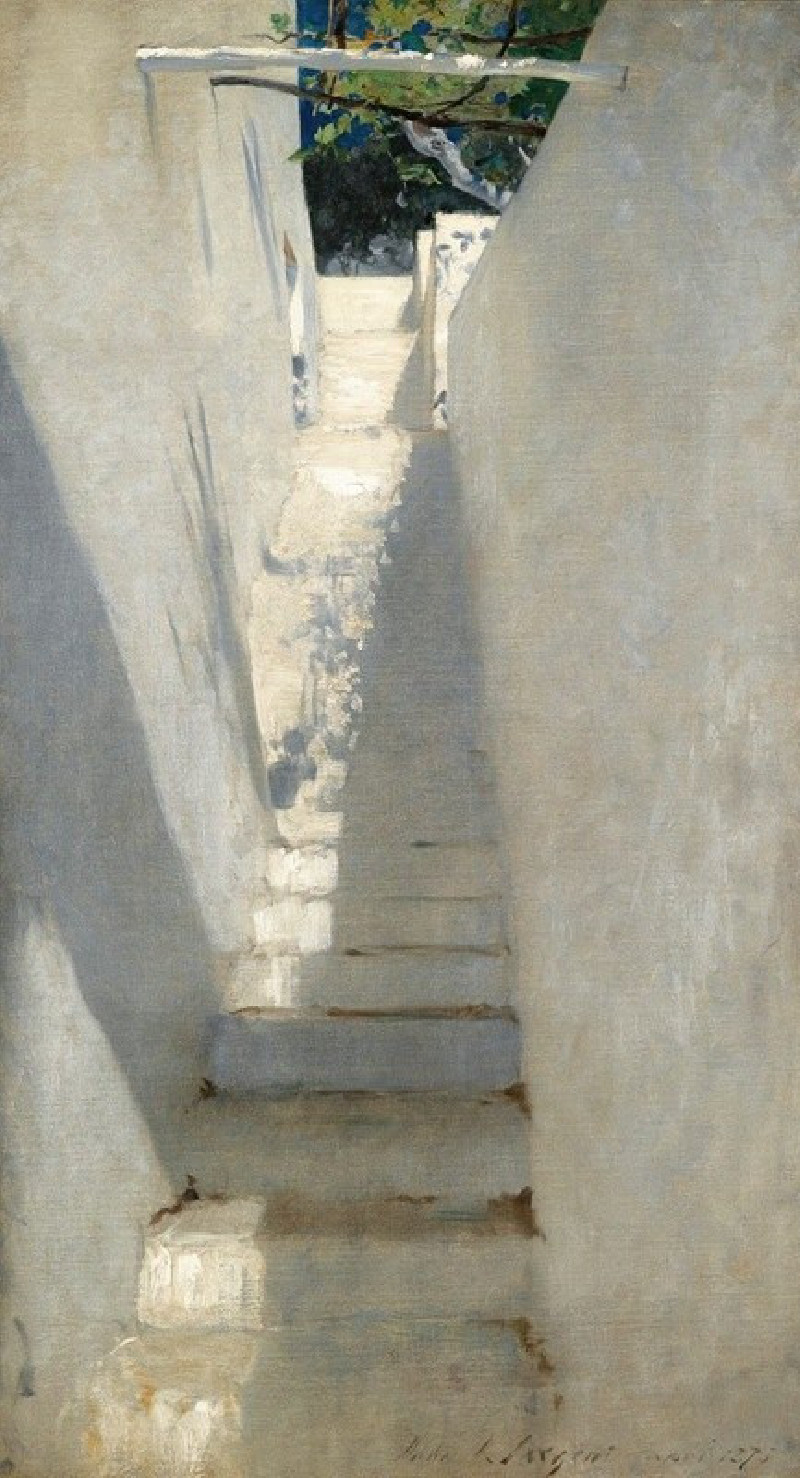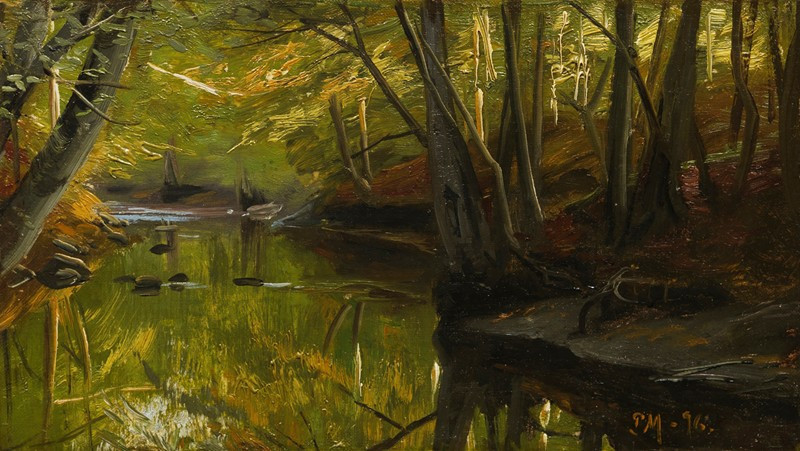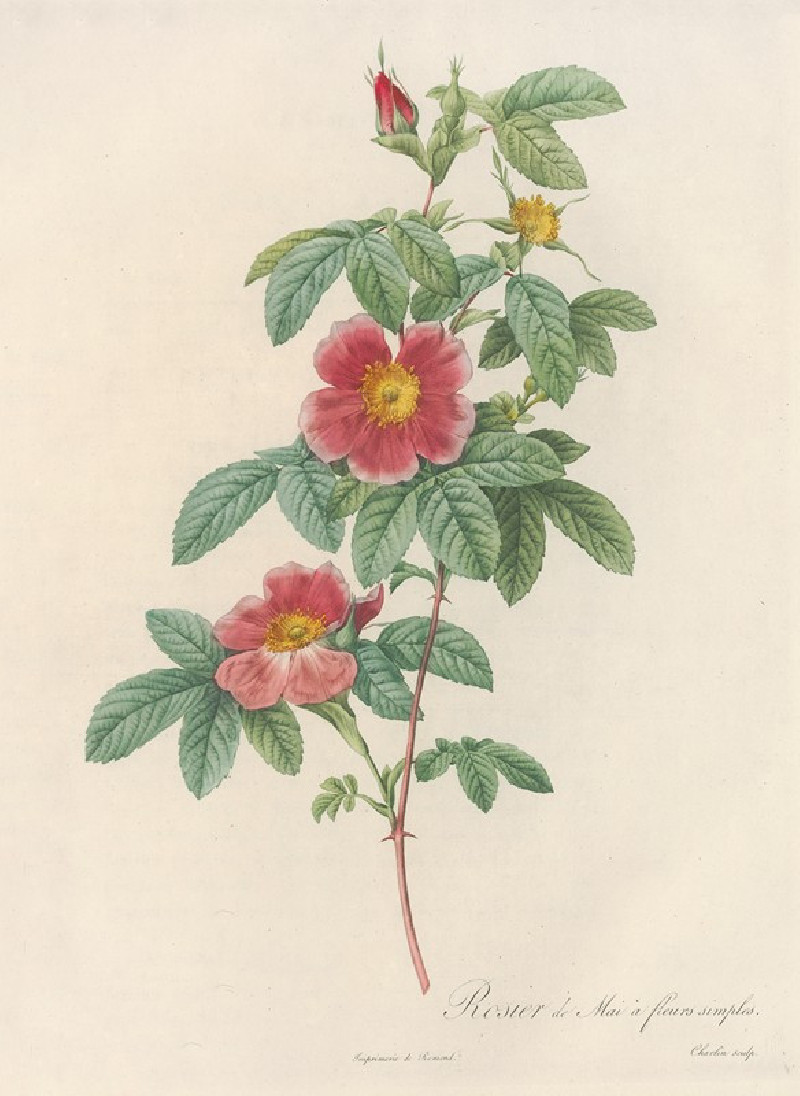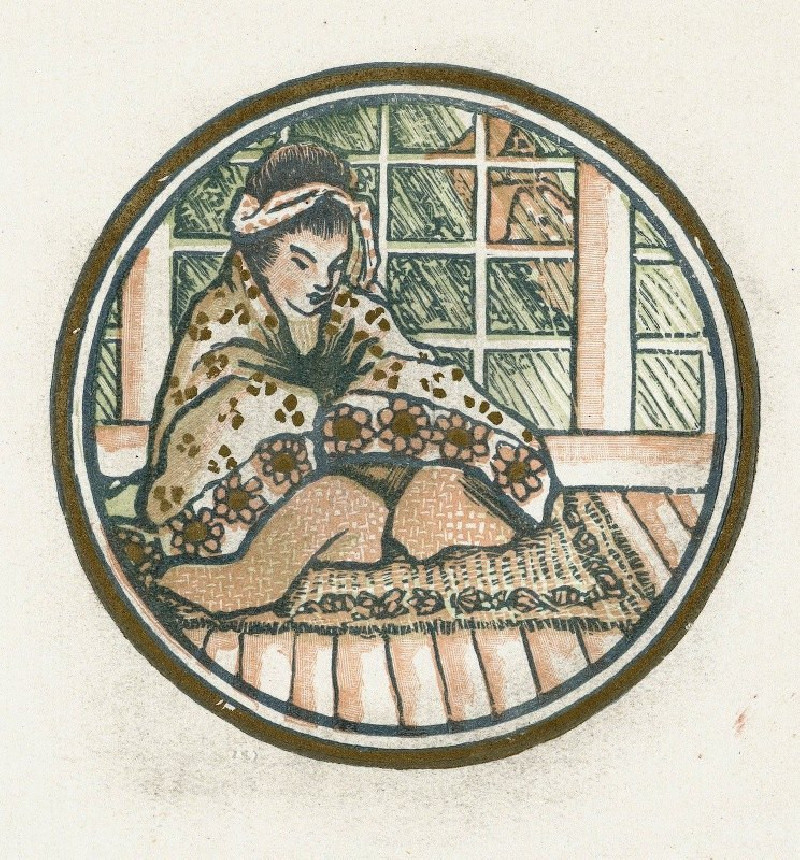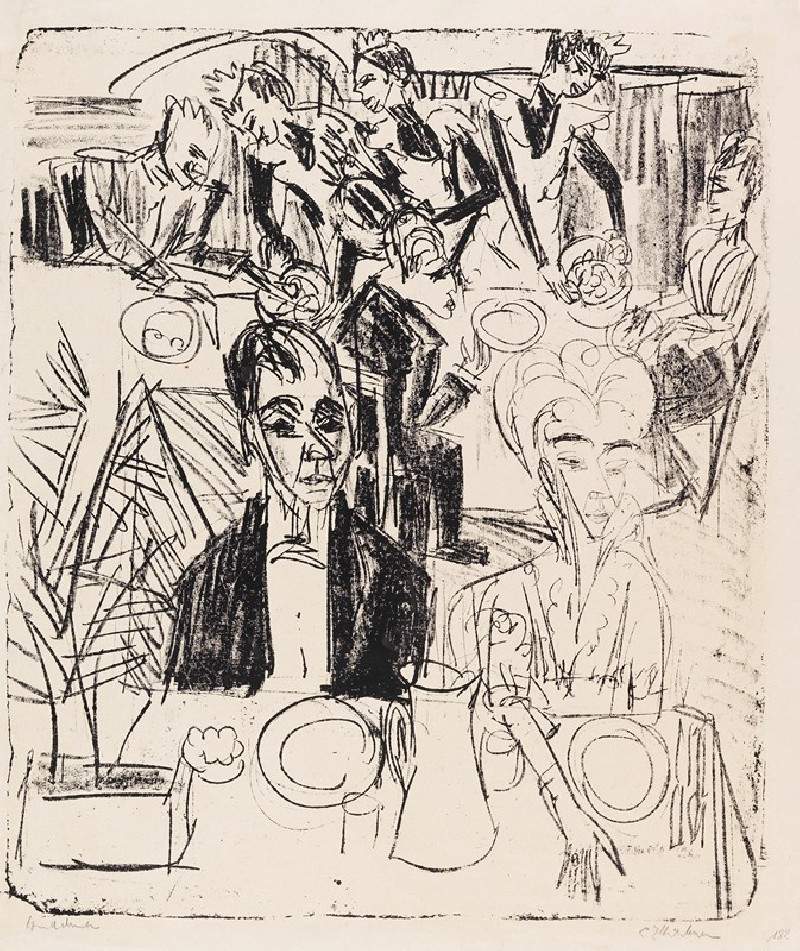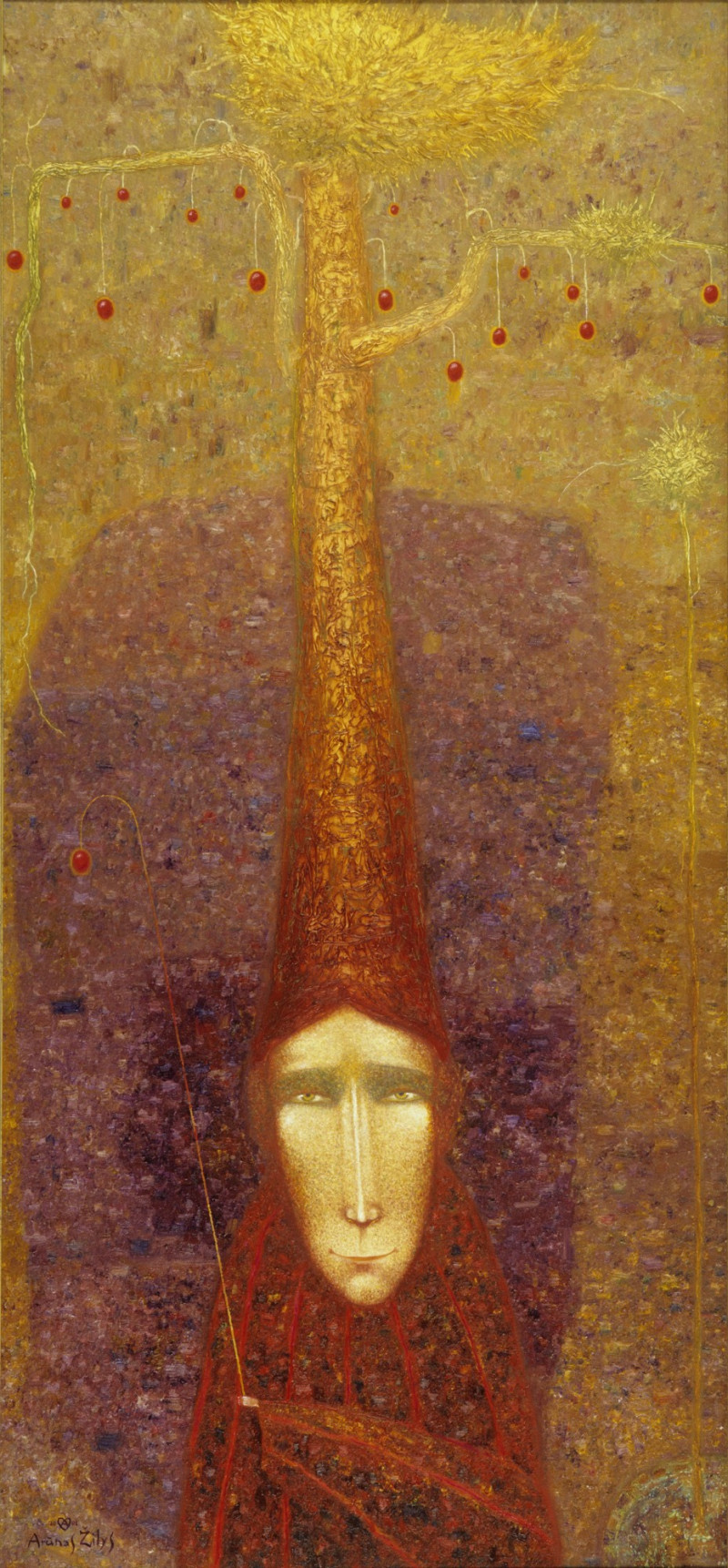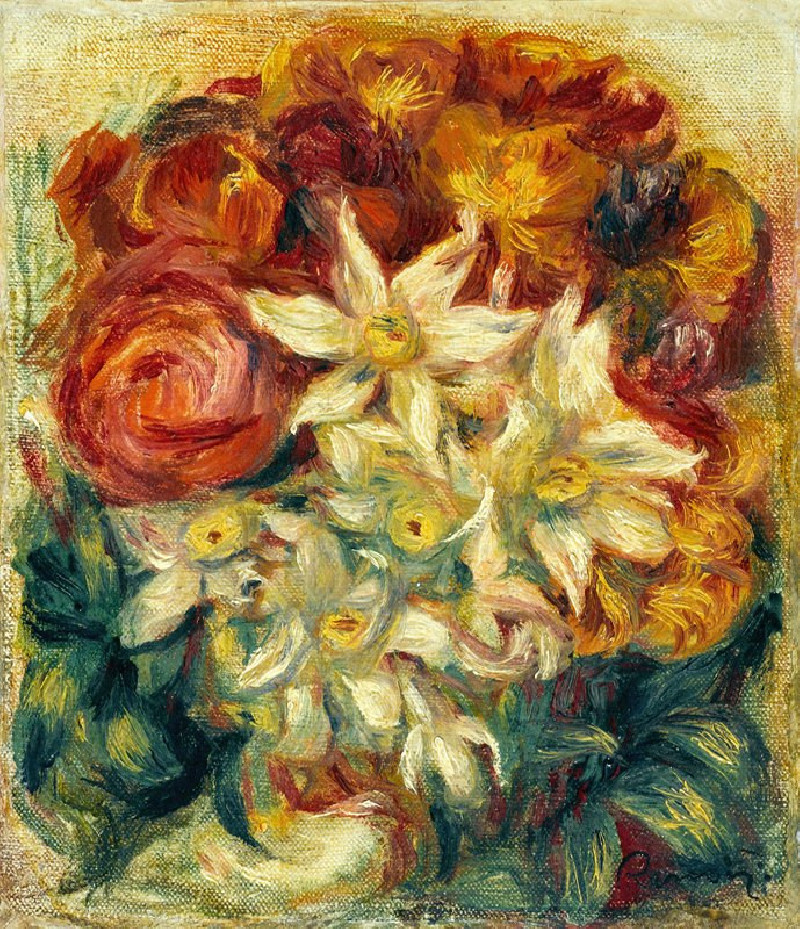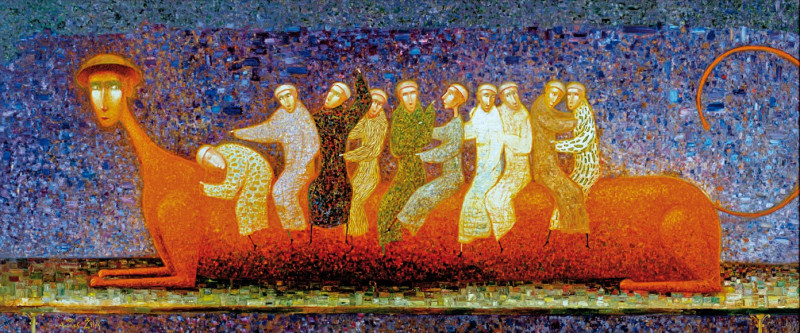Looking across the Hudson Valley (1867 )
Technique: Giclée quality print
Recommended by our customers
More about this artwork
This breathtaking landscape painting, "Looking across the Hudson Valley," is a masterpiece by the esteemed American artist Frederic Edwin Church. The artwork captures the grandeur of the Hudson Valley during the late 19th century, a period when the majesty of natural scenery was a predominant theme in art.The painting depicts a serene view from a high vantage point overlooking the vast valley. The horizon is defined by rolling mountains that fade into various shades of purple and blue, suggesting distance and the depth of the landscape. At the heart of this painting is a spectacular sunset, with the sky illuminated in vibrant tones of orange, pink, and yellow. These warm colors contrast beautifully with the cooler tones of the landscape, creating a dynamic and visually stunning composition.The foreground features a rugged terrain, textured and detailed, leading the viewer's eye towards the expansive valley below. The subtle brushstrokes in the sky reflect Church’s skill in rendering the transient light and celestial moods that change with time of day and weather."Looking across the Hudson Valley" is not just a mere representation of nature; it is an invitation to reflect on the sublime beauty of the American landscape. This painting, typical of Church’s work, invites viewers to experience the awe-inspiring vistas and appreciate the natural beauty of the Hudson Valley as seen through his eyes in 1867.
Delivery
Returns
Frederic Edwin Church (May 4, 1826 – April 7, 1900) was an American landscape painter born in Hartford, Connecticut. He was a central figure in the Hudson River School of American landscape painters, best known for painting large landscapes, often depicting mountains, waterfalls, and sunsets. Church's paintings put an emphasis on realistic detail, dramatic light, and panoramic views. He debuted some of his major works in single-painting exhibitions to a paying and often enthralled audience in New York City. In his prime, he was one of the most famous painters in the United States.

